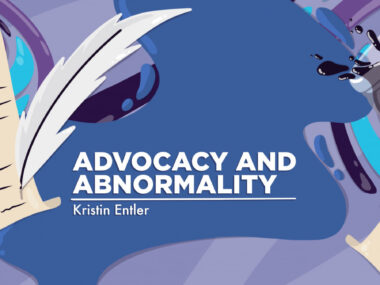AtbFinder kit helps MDs better pick antibiotics against P. aeruginosa
Study found that use of the kit led to improved outcomes for patients
Written by |

An antibiotic susceptibility kit, called AtbFinder, helped doctors choose effective antibiotics against lung infection caused by hard-to-treat Pseudomonas aeruginosa in four hours, and this led to fewer hospital stays, less use of systemic antibiotics, and better outcomes for people with cystic fibrosis (CF), according to a small real-world study.
The study (NCT05584982) evaluated how well antibiotics selected with the kit worked to kill P. aeruginosa or other bacteria in 35 people with CF who had taken systemic antibiotics in the previous year to treat a flare-up of lung symptoms known as a pulmonary exacerbation.
“AtbFinder is a new era in antimicrobial susceptibility testing that can potentially save thousands of lives and reduce healthcare costs,” George Tetz, MD, PhD, CEO of TGV-Dx, the kit’s developer, said in a press release. “We are working to make AtbFinder available to physicians and patients, already this year.”
The company-sponsored study, “AtbFinder Diagnostic Test System Improves Optimal Selection of Antibiotic Therapy in Persons with Cystic Fibrosis,” was published in the Journal of Clinical Microbiology.
Most common cause of lung infection in CF is P. aeruginosa
People with CF produce sticky and thick mucus that can clog up the airways and create an environment that is favorable for the growth of bacteria. The most common cause of lung infection in people with CF is the bacteria P. aeruginosa.
Antibiotics may be used to treat a bacterial infection that’s unlikely to clear up on its own, but P. aeruginosa is usually very hard to kill. The bacteria can form biofilms, which are communities that hold tight onto one another and onto surfaces and keep antibiotics away.
The bacteria also can develop resistance to antibiotics over time, which means that not all of these medicines will work against them. An antibiotic susceptibility test can help doctors find out which antibiotics will be most effective in treating infection.
Such a test usually requires samples of bacteria to be cultured (grown in the lab) before their sensitivity to different antibiotics can be checked. This can take days and doesn’t look at whole bacterial communities, only parts. As result, the test often fails to select effective antibiotics.
“The rate of ineffective antibiotic selection has been increasing, and is approaching 40% for some diseases, which is believed to contribute to higher mortality rates,” said Tetz, who’s also affiliated with the Human Microbiology Institute, in New York.
AtbFinder is a new era in antimicrobial susceptibility testing that can potentially save thousands of lives and reduce healthcare costs. We are working to make AtbFinder available to physicians and patients, already this year.
AtbFinder screens up to 188 antibiotics and their combinations
AtbFinder is an all-in-one, off-the-shelf kit that screens up to 188 antibiotics and their combinations, which is up to 15 times more than a conventional test, according to the company. It’s run on samples taken directly from the infection site, with antibiotics evaluated based on their efficacy against hard-to-treat biofilms.
“We are very excited that AtbFinder based on novel principles for antibiotic selection demonstrated such groundbreaking results,” said Victor Tetz, MD, PhD, who’s chief scientific officer at TGV-Dx. “Other tests ignore complex interbacterial interactions at the site of infection, which are the most critical in terms of antibiotic response prediction.”
In the study, researchers watched for changes in the number of exacerbations as people with CF were switched to treatment with antibiotics selected with AtbFinder. To do this, they compared the two years prior to the study with the two years following introduction of the kit during check-up visits or hospital stays.
“Doctors received the list of antibiotics suggested as effective according to AtbFinder recommendations, and it was solely their decision on how many antibiotics and in what form to prescribe to the patients,” the researchers wrote.
There were 22 men and 13 women, and their mean age was 28.3 years. Of the 35 patients, 33 had a lung infection with P. aeruginosa. On average, they were experiencing 40-45 exacerbations per year in the two years prior to the study.
AtbFinder led to significantly lower number of exacerbations
After they were switched to treatment with antibiotics selected by AtbFinder, the number of exacerbations dropped significantly to 0-2 per year. This translated into a 100% reduction in the number of hospital stays by the end of the second year.
Lung function, measured using percent predicted forced expiratory volume in 1 second (FEV1%), also improved. On average, FEV1% was 43.5% in the year prior to the study. It increased up to 56.9% by year one and up to 65.1% by year two.
By the end of the first year, P. aeruginosa was cleared in 21 (63.6%) of 33 patients, and in an additional six (18.2%) by the end of the second year. This was accompanied by a reduction in markers of inflammation, such as C-reactive protein levels and white blood cell counts, and an increase in weight to normal values.
AtbFinder delivered its selection of antibiotics in as little as a four-hour turnaround time and helped “improve net health outcomes by the selection of more effective antibiotics compared to conventional therapeutic approaches,” the researchers concluded.
The three most common antibiotics used in the year prior to the study were azithromycin, levofloxacin, and meropenem. Those most commonly selected with AtbFinder were levofloxacin, followed by meropenem, azithromycin, and colistin.








